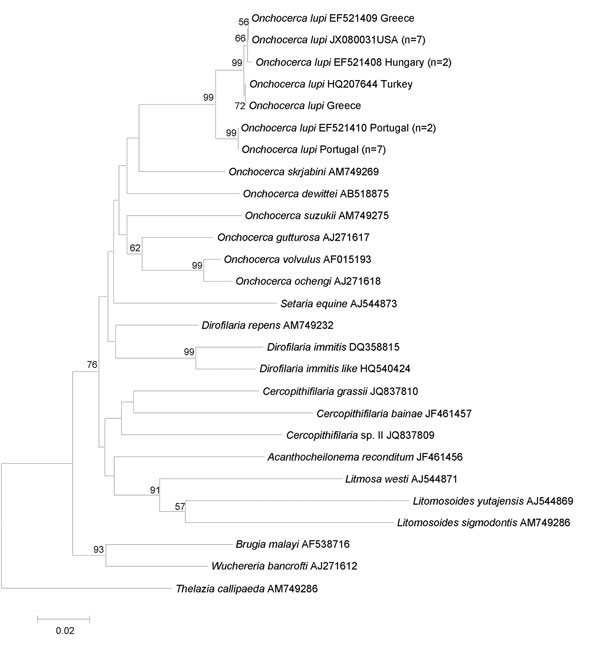Volume 19, Number 12—December 2013
Dispatch
Zoonotic Onchocerca lupi Infection in Dogs, Greece and Portugal, 2011–2012
Figure 2

Figure 2. . Phylogeny of Onchocerca lupi and other filarial nematodes based on cytochrome c oxidase subunit 1 gene sequences. Thelazia callipaeda was used as outgroup. Bootstrap confidence limits (8,000 replicates). GenBank accession numbers and number of haplotype sequences (in parenthesis) are reported along with their geographic origin. Scale bar indicates genetic differences.
Page created: November 19, 2013
Page updated: November 19, 2013
Page reviewed: November 19, 2013
The conclusions, findings, and opinions expressed by authors contributing to this journal do not necessarily reflect the official position of the U.S. Department of Health and Human Services, the Public Health Service, the Centers for Disease Control and Prevention, or the authors' affiliated institutions. Use of trade names is for identification only and does not imply endorsement by any of the groups named above.